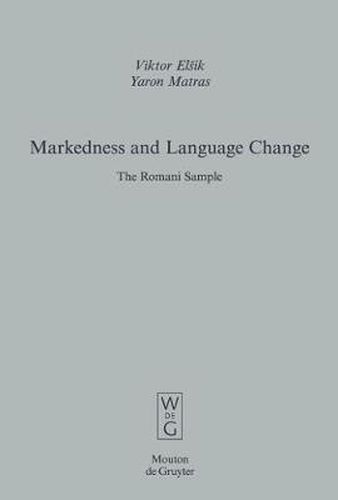Readings Newsletter
Become a Readings Member to make your shopping experience even easier.
Sign in or sign up for free!
You’re not far away from qualifying for FREE standard shipping within Australia
You’ve qualified for FREE standard shipping within Australia
The cart is loading…






This title is printed to order. This book may have been self-published. If so, we cannot guarantee the quality of the content. In the main most books will have gone through the editing process however some may not. We therefore suggest that you be aware of this before ordering this book. If in doubt check either the author or publisher’s details as we are unable to accept any returns unless they are faulty. Please contact us if you have any questions.
‘Markedness’ is a central notion in linguistic theory. This book is the firstto provide a comprehensive survey of markedness relationsacross various grammatical categories, in a sample of closely-related speech varieties. It is based on a sample of over 100 dialects of Romani, collected and processed via the Romani Morpho-Syntax (RMS) Database - a comparative grammatical outline in electronic form, constructed by the authors between 2000-2004. Romani dialects provide an exciting sample of language change phenomena: they are oral languages, which have been separated and dispersed from some six centuries, and are strongly shaped by the influence of diverse contact languages.
The book takes a typological approach to markedness, viewing it as a hierarchy among values that is conditioned by conceptual and cognitive universals. But it introduces a functional-pragmatic notion of markedness, as a grammaticalised strategy employed in order to priositise information. In what is referred to as'dynamic’, such prioritisation is influenced by an interplay of factors: the values within a category and the conceptual notions that they represent, the grammatical structure onto which the category values are mapped, and the kind of strategy that is applied in order to prioritise certain value. Consequently, the book contains a thorough survey of some 20 categories (e.g Person, Number, Gender, and so on) and their formal representation in various grammatical structures across the sample. The various accepted criteria for markedness (e.g. Complexity, Differentiation, Erosion, and so on) are examined systematically in relation to the values of each and every category, for each relevant structure. The outcome is a novel picture of how different markedness criteria may cluster for certain categories, giving a concrete reality to the hitherto rather vague notion of markedness. Borrowing and its relation to markedness is also examined, offering new insights into the motivations behind contact-induced change.
$9.00 standard shipping within Australia
FREE standard shipping within Australia for orders over $100.00
Express & International shipping calculated at checkout
This title is printed to order. This book may have been self-published. If so, we cannot guarantee the quality of the content. In the main most books will have gone through the editing process however some may not. We therefore suggest that you be aware of this before ordering this book. If in doubt check either the author or publisher’s details as we are unable to accept any returns unless they are faulty. Please contact us if you have any questions.
‘Markedness’ is a central notion in linguistic theory. This book is the firstto provide a comprehensive survey of markedness relationsacross various grammatical categories, in a sample of closely-related speech varieties. It is based on a sample of over 100 dialects of Romani, collected and processed via the Romani Morpho-Syntax (RMS) Database - a comparative grammatical outline in electronic form, constructed by the authors between 2000-2004. Romani dialects provide an exciting sample of language change phenomena: they are oral languages, which have been separated and dispersed from some six centuries, and are strongly shaped by the influence of diverse contact languages.
The book takes a typological approach to markedness, viewing it as a hierarchy among values that is conditioned by conceptual and cognitive universals. But it introduces a functional-pragmatic notion of markedness, as a grammaticalised strategy employed in order to priositise information. In what is referred to as'dynamic’, such prioritisation is influenced by an interplay of factors: the values within a category and the conceptual notions that they represent, the grammatical structure onto which the category values are mapped, and the kind of strategy that is applied in order to prioritise certain value. Consequently, the book contains a thorough survey of some 20 categories (e.g Person, Number, Gender, and so on) and their formal representation in various grammatical structures across the sample. The various accepted criteria for markedness (e.g. Complexity, Differentiation, Erosion, and so on) are examined systematically in relation to the values of each and every category, for each relevant structure. The outcome is a novel picture of how different markedness criteria may cluster for certain categories, giving a concrete reality to the hitherto rather vague notion of markedness. Borrowing and its relation to markedness is also examined, offering new insights into the motivations behind contact-induced change.